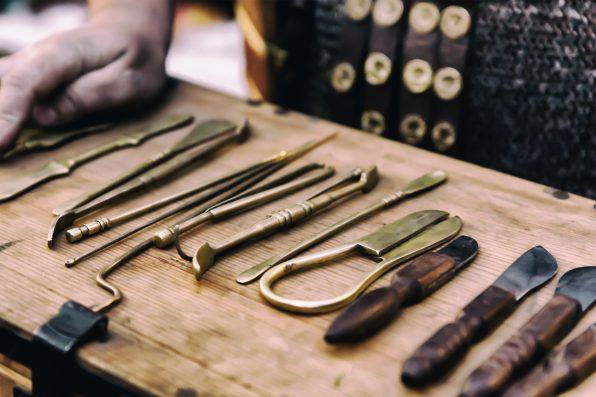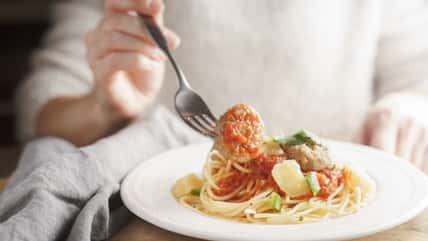These Gory And Gruesome Medieval Medical Procedures Will Make You Grateful For The Advancement Of Modern Medicine

The Halloween season is upon us, and during this time of year, it’s always fun to dive into the gruesome and the gory to give ourselves a scare. After all, it’s part of getting into the spirit of the holiday!
So, let’s take a look at some of the medical procedures that were practiced during the medieval period. Several of these, if not all of them, have done more harm than good. You’ll be highly relieved that these methods are not used today and glad for how far medicine has advanced.
Bloodletting
Bloodletting is the practice of draining the blood from a person’s veins for the purpose of curing an illness. The removal of the blood is done by either a physician or leeches. It was a common therapy for thousands of years and actually dates all the way back to ancient Greece.
The logic behind bloodletting was based on a theory posed by a famous ancient Greek physician named Hippocrates. Hippocrates believed that there were four fluids or “humors” in the human body and that each humor was associated with a specific organ and personality type. An imbalance in these humors was thought to be the cause of many physical and mental illnesses.
Two centuries before the start of the medieval ages, a Greek physician, Galen of Pergamum, proposed the theory that draining some of the patient’s blood would restore balance among the four humors.
So, during the medieval period, doctors would perform bloodletting for conditions such as smallpox, gout, fainting spells, and poor temperament. They would make cuts in the patient’s neck and forearm or place leeches in those areas and let the worms do the work.
Trepanation
If you thought bloodletting was appalling, this medical practice is even more dreadful and is like something straight out of a horror film. Trepanation refers to the practice of drilling a hole into a patient’s skull. It was used to treat headaches, epilepsy, head wounds, and mental illnesses.

Kai Beercrafter – stock.adobe.com- illustrative purposes only
During the Middle Ages, the prevailing belief was that people with mental illnesses were possessed by the devil. So, doctors often performed trepanation as a way to release evil spirits from the affected person’s head.
The worst part is that patients who underwent trepanation back then were wide awake the whole time since anesthesia had not yet been invented.
Medicinal Cannibalism
Shockingly enough, cannibalism was regarded as a medical treatment back in medieval times. People were under the impression that the consumption of human body parts had healing powers. They believed it could cure several ailments, boost vitality, and help retain youthfulness.
Physicians prescribed human blood for migraines, ulcers, epilepsy, eye problems, and more. Oil made from boiled human bones was given to individuals with gout or epilepsy.
Many people would flock to executions to gather fresh blood from the still-warm bodies of the victims. Even members of royalty participated in medicinal cannibalism. Kings and queens would drink elixirs made from human body parts and fluids to cure their illnesses.
The King’s Touch
Kings who ruled during the medieval era were thought to be able to heal the sick with just a touch of their hand. It was called “the Royal Touch” and was often used as a treatment for those suffering from scrofula, which was a type of tuberculosis that caused an infection in the lymph nodes.
People of all social classes would wait in line for hours just to be touched by the king. By the fifteenth century, monarchs who didn’t want to come in contact with sick people all day long started giving out gold coins they had blessed instead.
Scents For Healing Wandering Wombs
Wandering womb was the belief that a woman’s uterus could wander through the body, putting pressure on vital organs, which would result in hysteria, serious illness, and suffocation.
Doctors thought the cause of a wandering womb was due to a woman not being pregnant. Therefore, the uterus would make its way through the body, searching for something to fill the womb.
If physicians suspected that the uterus had reached the top of a woman’s body, the remedy was to place foul-smelling fumes under her nose and sweet-smelling scents between her legs in the hopes that the uterus would go back to where it belonged.
If true crime defines your free time, this is for you: join Chip Chick’s True Crime Tribe
She Walked Out Of A First Date After A Guy Berated Her For Not Wanting To Have Kids
She Got Up And Left Her Own Wedding In Tears After Her Parents Humiliated Her During Their Speech
She’s Worried That Her Preschooler Son Is Showing Psychopathic Signs
Want To Deer-Proof Your Garden? Here Are 10 Shrubs That Deer Won’t Dine On
Sign up for Chip Chick’s newsletter and get stories like this delivered to your inbox.
More About:Freaky





